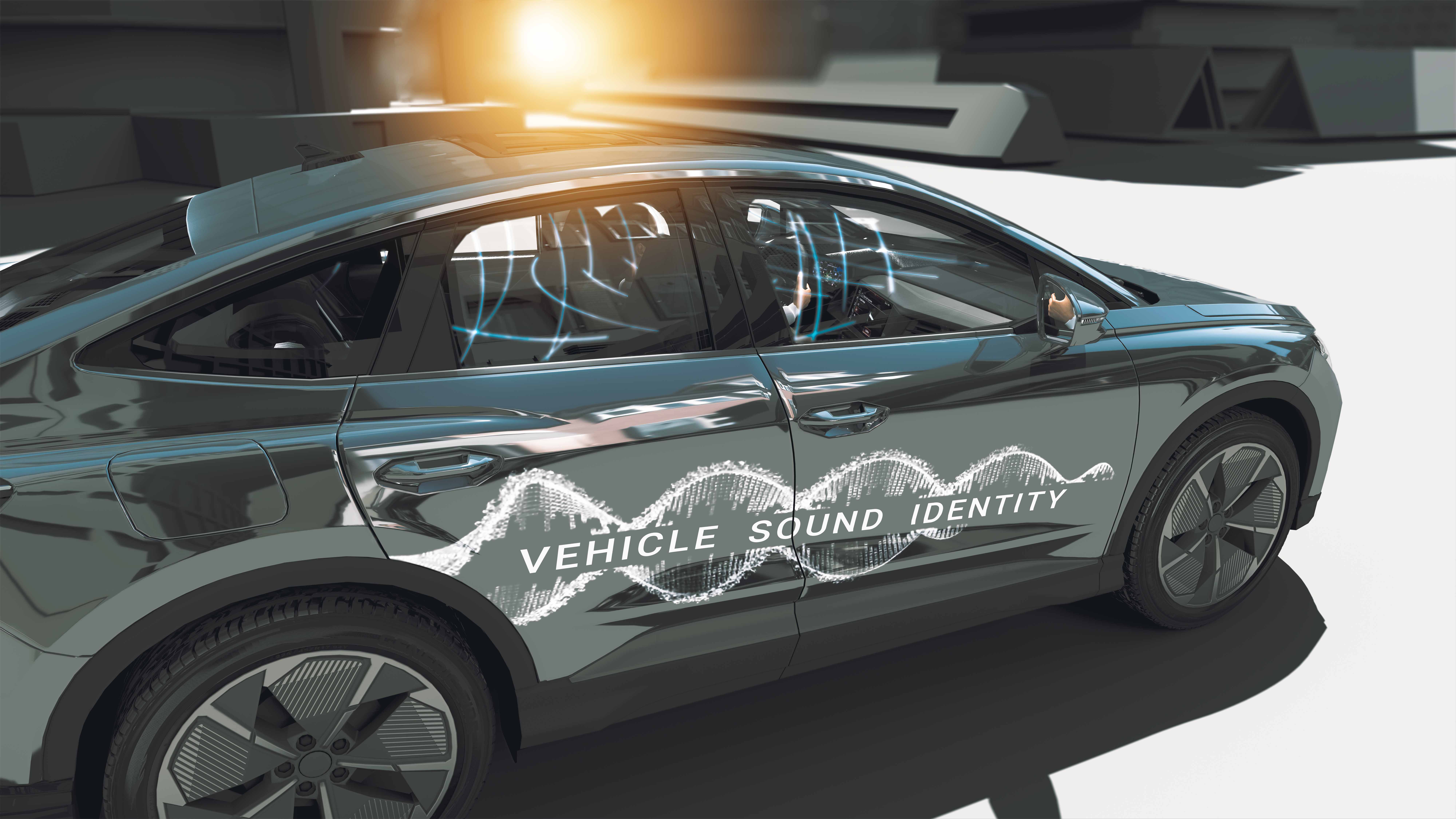Can you tell a car’s make and model by simply hearing the roar of its engine? Do you love the sound of a multi-cylinder engine, and the feeling of changing gear by hand? While many car lovers embrace the idea of an electric, emission-free driving future, the thought that this comes hand-in-hand with a very silent ride is less welcome. But the latest automotive trend holds the solution to your continued driving pleasure: ‘soundscaping’ delivers a richer, engaging experience, even in ‘naturally’ quiet electric vehicles.
The concept of crafting an acoustic experience has actually been around for a while. Since the 1990s, sporty and luxury vehicles have been fitted with unique sound systems to meet customers’ expectations and create a distinct brand signature. Now, soundscaping, or sound design, is helping make electric vehicles safer for others on the road, and more enjoyable for driver and passengers alike.
Soundscaping fulfils several purposes. Firstly, it ensures that electric vehicles comply with legislation to protect pedestrians, with an auditory warning that a vehicle is approaching. Second, it does this in a pleasant way, both for the people outside and inside the car. Thirdly, it offers car manufacturers a way to create a unique, individually branded sound for their vehicles.
External sounds to increase safety
Who would have thought quieter cars could be a hazard? Because they draw power from a battery rather than a combustion engine, hybrid and battery-electric vehicles don’t make much noise, especially at low speeds. But that means pedestrians and cyclists may not hear them coming.
So in 2019, the EU and the US made Acoustic Vehicle Alerting Systems (AVAS) a legal requirement for new models. These cars must generate a specific sound level when travelling below 20-30 kilometres* per hour, and when reversing. The sounds must vary in volume to indicate when vehicles are accelerating, decelerating, or reversing. In the US, while ‘idling’, they must make a sound of at least 44 decibels: about the volume of a refrigerator softly humming.
Interior sound to enhance the experience
Inside the electric vehicle, ironically, the lack of noise from a combustion engine causes its own problems. That noise actually masked other, unpleasant sounds, from the heating or air conditioning system, or from road or wind noise, for instance. Drivers have also said the utter silence of the car reduces their sense of speed, safety, control, and active experience.
Soundscaping can address these concerns. It uses intelligent sound systems that combine noise cancellation techniques with acoustic modifications to create an emotionally appealing, multi-sensory experience, in and around the car.
There are two main approaches car manufacturers are taking to soundscaping. On the one hand, they can try to perfectly recreate the sound experience of the original combustion-engine vehicle. Think of engine hums that change in pitch depending on the speed of the car. Audi and Ford are two car manufacturers following this path.
On the other hand, there are the manufacturers who like to take the sound experience a little bit further, creating more organic and futuristic sounds. Nissan and BMW are in this camp, for example. BMW even collaborated with Academy Award-winning film score composer Hans Zimmer on a sound environment for its BMW i4.
Really, there are no limits to soundscape design. Some even integrate machine learning features, to adapt to the driver’s habits. You might have a cheerful, ‘chirpy’ ignition sound in the morning, and a more subdued, relaxed version at the end of a hard day’s work. The possibilities are endless!
‘Phantone’: a sound platform for everyone
But this exciting new world of vehicle sound design presents many complicated and expensive challenges for car manufacturers and their acoustic development teams. Because whether for a ‘technical’ or an ‘emotional’ sound, you must combine technology expertise with musical knowhow and composition skills.
And that’s what we’re excited about at Kendrion: combining complicated software technology with creativity to deliver an engaging, emotive driver and passenger experience. And we have the right mix of actuator, software and electronics expertise to bring it all together.
Our ‘Phantone’ platform helps car manufacturers create a vehicle sound identity that is both unique to their brand and delivers an outstanding auditory experience.
It offers their design teams all they need to build an intelligent sound system, from a complete AVAS solution, to speakers, a sound control unit, sound designer software, and engineering support.
The modular approach fits the needs of both more mature manufacturers - who can pick and choose what they require -, and those newer to the technology, because the entire system is predefined.
Our latest developments
Working with Kendrion colleagues from across the globe, including China, US, Romania, and Germany, we have gained a lot of insight into what matters to car manufacturers and end customers worldwide. This has enabled us to continue redefining the ‘Phantone’ roadmap to better match customer feedback. For example, we delivered a new sound control unit with our SoundDesigner software to a starting US car brand, and to a leading US car manufacturer for the Chinese market.
We’re also looking into designing software-only solutions that can be hooked up directly to the car’s infotainment system. Electric cars already contain a lot of electronics and cables, creating a risk of fire. Software-only solutions help reduce some of this risk. Further ahead, we’ll also explore more intelligent sound distribution; for example, emitting sound only where needed.
The market for hybrid and battery-electric vehicles continues to grow, and in 5 years there may be as many as 12.5 million AVAS sound systems on the road worldwide. We are excited about helping shape the future of mobility with smart, flexible products that allow our customers to bring their designs to market quickly and without major R&D efforts.
Does it all ‘sound good’ to you? Are you looking to ‘scape’ your own unique sound design? Reach out to us, and we’ll see how our global team can help you shape the future of driving pleasure in electric vehicles.
Learn more on our sound enhancement solutions
*20 kilometers in Europe and China; 30 kilometers in the US.








